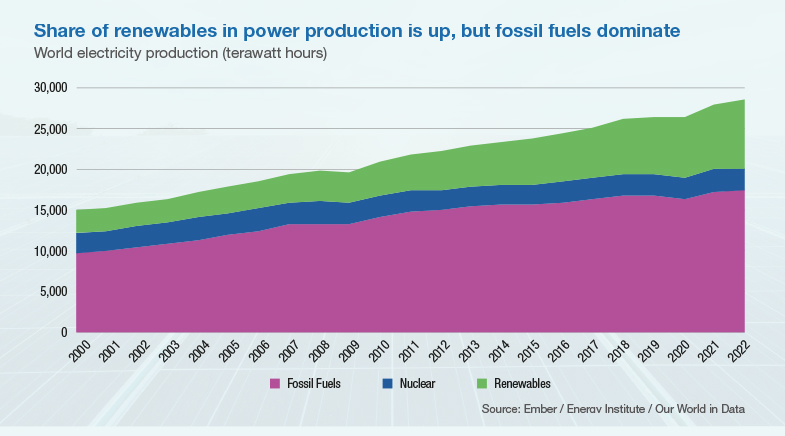Dye another day
-
- from Shaastra :: vol 04 issue 05 :: Jun 2025

Eco-friendly solar cells that replace rare metals promise to be cheaper and safer.
The world is working on replacing rare metals with abundant, cheap, and less toxic carbon materials. Scientists from Bengaluru-based CHRIST (Deemed to be University) have shown that molybdenum-doped carbon fibres from cotton can replace the expensive platinum used in dye solar cells without significantly affecting efficiency.
Dye-sensitised solar cells that produce electricity using diffused light can generate electricity indoors and power small electronics. In such solar cells, the dye coated on the photoanode can absorb the diffused light and excite electron-generating electricity. The dye later gets back its lost electrons from an electrolyte, and the electrolyte gets them from a counter electrode. Platinum is widely used in making counter electrodes in such solar cells due to its superior catalytic and conductivity properties. It is, however, scarce, and thus the cells are expensive.
The new cells' efficiency is similar to that of platinum electrodes, while their cost is almost half that of the platinum-based dye solar cells.
Manoj Balachandran, Associate Professor at CHRIST, and his PhD student Shanyukta Upadhyay were hunting for a material to replace platinum. They wondered if molybdenum-doped carbon fibre derived from cotton could do the job. Molybdenum, which is required in small quantities, has good catalytic properties, which enable it to donate electrons to an electrolyte easily. Carbon fibre has high electrical conductivity and stability. In their new research paper, published in the journal Carbon (bit.ly/dye-solar-cells), the team shows the development of a counter electrode by combining the two. To make the counter electrode, this mixture was spin-coated over fluorine-doped tin oxide, a transparent conductive glass substrate. This transparency allows the dye solar cell to absorb light from two sides, making it bifacial. While the solar cells with platinum-based counter electrodes showed power conversion efficiencies of 7.50%, the cells containing the newly developed counter electrodes showed 7.04%.
Upadhyay says the new cells' efficiency is similar to that of platinum electrodes, while their cost is almost half that of the platinum-based dye solar cells. The team is trying to optimise the counter electrode further to improve its power conversion. Jayaraj Nithyanandhan, Senior Principal Scientist at the Pune-based National Chemical Laboratory, who has worked extensively on dye solar cells, believes this development of bio-inspired carbon-based cathode materials may play an important role in dye-sensitised solar cell technology.
Have a
story idea?
Tell us.
Do you have a recent research paper or an idea for a science/technology-themed article that you'd like to tell us about?
GET IN TOUCH














